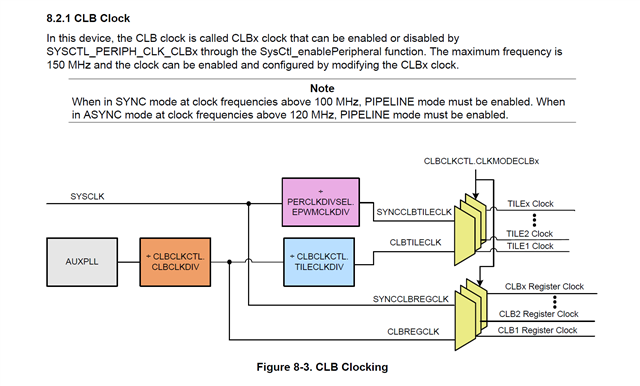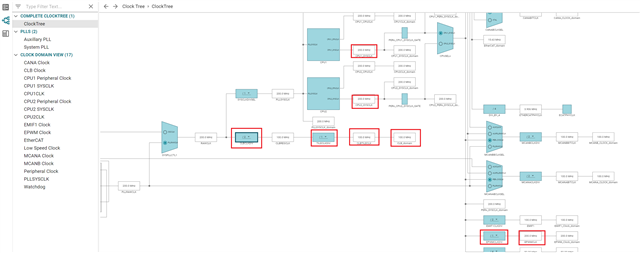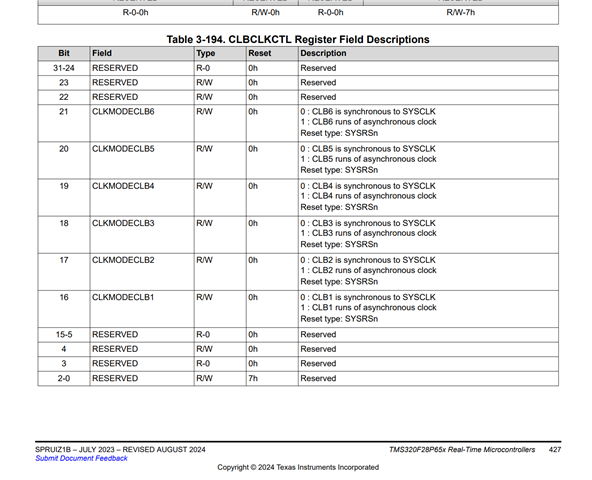Other Parts Discussed in Thread: SYSCONFIG
Tool/software:
Hi Champs,
I am asking this for our customer.
When the user uses SYSCLK = EPWMCLK = 200 MHz, does that mean CLB clock can be 100 MHz at maximum because CLB clock cannot exceed 150 MHz in 8.2.1 CLB Clock of TRM ?
(Note that SYSCLK = EPWMCLK = 200 MHz is a hard requirement here.)

Q1:
We uses Sysconfig Clocktree below.
Would you please confirm the configuration below is correct?

Q2:
In TRM Table 3-194 below for CLBCLKCTL, the bits are reserved. The user does not see CLBCLKDIV, TILECLKDIV.
Is there anything wrong?
By using Sysconfig clocktree above, can CLB clock be set correctly?


